This brief study of the coins mentioned in the Gospel has helped us to better understand Jesus’ teachings. Knowing the value of each one allows us greater objectivity in grasping the message the Lord conveys in those passages. For this reason, we have titled it “A Treasure to delve deeper.”
Part IV – The As and the Lepton. Coins of the Poor Widow.
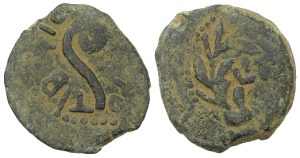
Leptons of Pontius Pilate, Judea from Imperio Numismático.com
The as was a Roman copper or bronze coin of low value, weighing 10.0 grams. It corresponded to one-sixteenth of a denarius.
Gospel Passages:
Matthew 10:29 and Luke 12:6: Jesus mentions the as when speaking of the value of sparrows. Jesus says that two sparrows are sold for an as, and though they are of little value, not one falls to the ground without God’s knowledge. Jesus uses this coin to emphasize that, in God’s eyes, even what seems insignificant is important. This conveys that God cares for every detail of life, and nothing escapes His attention.
Mark 12:41-44 and Luke 21:1-4: Mentioned in the story of the poor widow who places two leptons in the temple treasury. Though the amount was very small, Jesus praises her for giving more than all others, as she gave all she had, while the rich gave from their abundance.
The two coins together given by the poor widow would amount to one-quarter of an as, that is, 2.70 grams of bronze, each weighing 1.35 grams. It is most likely that they were Greek lepton coins of bronze or copper, weighing approximately 1.2 grams. These were the smallest and least valuable coins in Jesus’ time. They could be considered cents.
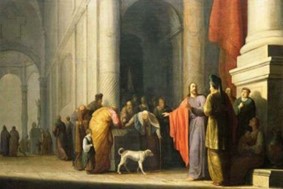
Oil painting by Paulus Lesire (17th Century), Dordrechts Museum (Netherlands)
Jesus praises the gesture of this poor but magnanimous woman who withdraws without drawing attention. Benedict XVI, commenting on this passage, says: “Her insignificant coin becomes an eloquent symbol: this widow does not give to God what is surplus, nor what she has, but what she is: her entire self” (Benedict XVI: “Message for Lent 2008”).
The as and the lepton are small coins in economic terms, but in the Gospels, they are laden with spiritual significance. The as illustrates God’s care for each creature, while the lepton represents true generosity and heartfelt devotion. These examples show how, in the kingdom of God, small actions and humble sacrifices are of great value.
The Thirty Coins of Silver Given to Judas by the Sanhedrin. Mt 26:14-16:
The translation of the Montserrat Bible specifies thirty shekel coins, but many other translations refer to thirty silver coins without specifying their type. There is no consensus among scholars about what kind of coins they were. It is only clear that they were coined in silver.
Experts propose two possible hypotheses:
a) It is highly probable that they were shekels of Tyre. This was the most popular coin among Jews, valued for its high silver content (97%) and used to pay the annual temple tax in Jerusalem. Since Judas received these coins from the temple priests, it seems very likely they were shekels of Tyre.
b) They could also have been Greek or Roman coins.
Each shekel was equivalent to four denarii, so the thirty coins amounted to approximately four months’ wages.
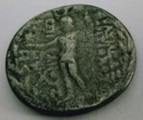
Silver Shekel (Vilar Collection)
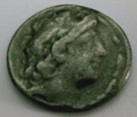
Silver Shekel (Vilar Collection)
In the Old Testament, there is a reference to the theme of the thirty coins: Zechariah 11:11-12, where the prophet receives a wage of thirty silver coins, expresses dissatisfaction, and Yahweh instructs him to throw them to the potter’s field if he does not want them. This alludes to the temple priests, who, after Judas returns the coins and hangs himself in despair, decide to buy a field called the “potter’s field.”
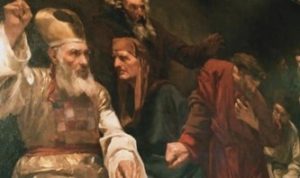
Painting by Simó Gómez Polo (Barcelona 1845-1880) “Penediment de Judes” Reial Acadèmia de Belles Arts de Sant Jordi, Barcelona.
By Josep M. Vilar Bassas and Maria Vilar Vinyeta (Experience Campus – UIC Barcelona).
